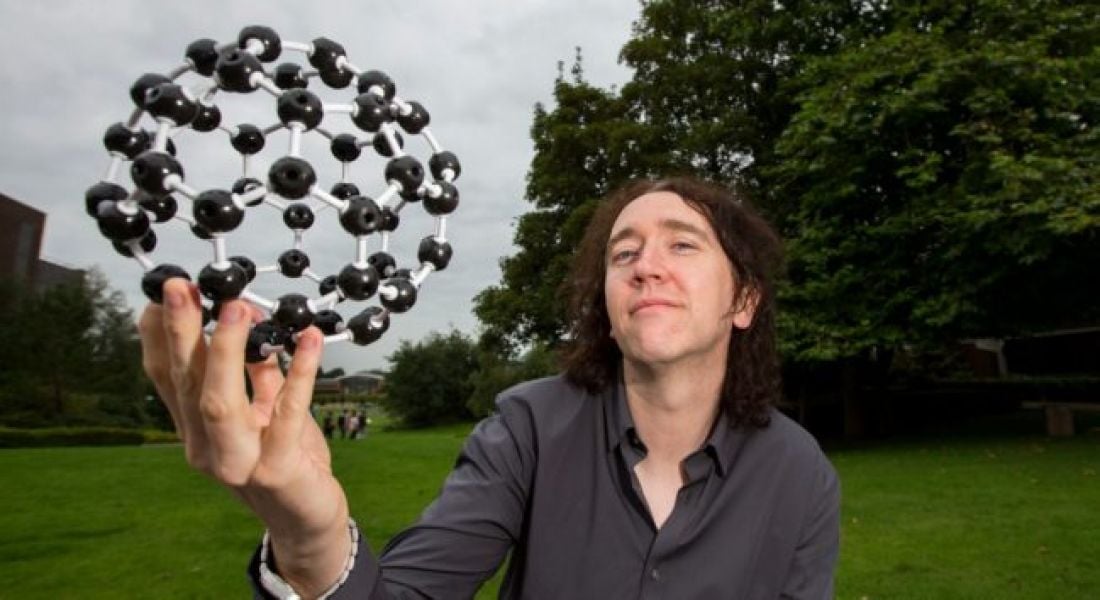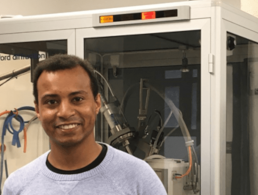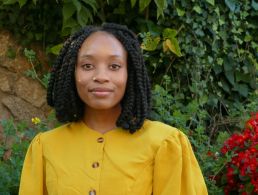A career as a researcher can seem quite ambiguous to those outside the industry. Want to know what it’s really like?
Science Week is a great opportunity to share insights into what a career as a researcher looks like.
While many simply picture men and women in white lab coats sporting a pair of safety goggles, research varies greatly from one group to the next, from one department to another, and between institutions.
Damien Thompson is a senior lecturer in the Department of Physics at the Bernal Institute at the University of Limerick (UL).
However, he also leads a research group in design of materials for applications in health and electronics. Here, he gives Siliconrepublic.com an insider look at what his work as a researcher is really like.
What is your role within University of Limerick?
I am a senior lecturer in physics and I lead a research group in design of materials for applications in health and electronics.
What education and other positions led you to the role you have now?
I have a degree in chemistry and PhD in computational chemistry, where I designed catalysts for selective oxidation of alkanes into plastic precursors.
I wanted to learn more about how nature is so much better at catalysing reactions using enzymes, so I worked as a postdoc at École Polytechnique in Paris, where I developed computer models of proteins that regulate genetic code translation, so they make sure the right amino acid gets attached to the right RNA molecule.
I now try to design synthetic organic materials that display some of the tricks evolved in proteins, meaning that they can perform very precise chemical reactions and transformations with a very high degree of specificity.
Put simply, they ensure the right molecule gets to, and sticks to, the right place at the right time. The little nano machines inside us do this millions of times every day, so the proof of principle is there but we still have to learn a lot of details to make ‘bio-inspired’ materials that can work outside of cells.
The materials could be pharmaceutical crystals, molecular films in miniaturised electronic devices, or nanoparticles coated with tumour-targeting shells – the same physics applies, and we want to learn the design rules.
Can you tell us about the research you’re currently working on?
We are developing computer codes that can predict the behaviour of materials, in order to reduce the amount of trial-and-error experiments that need to be done to make the best material for a given application.
This means we need to learn a lot about chemistry, physics, biology and computer science, so we are always learning. One of my main focuses right now is learning to control the ways in which small proteins stick together.
If we can control this self-assembly process, then we could, on one hand, try to design drugs to prevent the formation of insoluble plaques that trigger Alzheimer’s disease.
On the other hand, knowing how to control the assembly would also help design structures with potentially beneficial properties like, for example, non-toxic drug carrier particles that can shepherd poorly soluble drug compounds to target sites in the body and then dissolve.
So, our research is targeted on developing broadly applicable tools by increasing our understanding of fundamental science.
What first stirred your interest in this area?
I had a brilliant chemistry teacher at school, so that helped. I remember reading John Gribbin’s popular science book Q is for Quantum over Christmas during the second year of my degree and my head spinning with possibilities – that’s what steered me towards the more physics-oriented PhD.
More recently, Richard Jones’s Soft Machines: Nanotechnology and Life has been a huge influence on my research. Jones took Eric Drexler’s elegant but unworkable notions about whittling material down smaller to make atomic scale machines, and re-pitched them in the context of organic materials.
He wasn’t the first to do this but he summarised the field in a very accessible and hugely readable way – I would love to think I could write something in that vein someday.
I think, as scientists, we too often stay in our extremely specialised, technical silos, so any effort to communicate beyond our own communities is so important. Both the books I mentioned focus on getting you excited about the ideas before hitting you with the maths.
If there is such a thing, can you describe a typical day for you?
Coffee. Spotify. They are mandatory. Then, try to ignore emails for as long as possible and focus on setting up and analysing my latest computer models.
Meet with group members to discuss ongoing work – usually ad hoc because I’m terrible at keeping to a fixed schedule. Skype with collaborators (time depends on where they are). Give lectures, tutorials and labs depending on the day.
Then, lunch. I like to do the typical Irish dinner-at-noon thing. I should probably go for a walk after but am usually in too much of a rush back.
Usually work on manuscripts in the afternoon; some days have faculty and similar-type meetings, too. That’s about as typical as it gets but every day is different really.
What skills and tools do you use on a daily basis?
Creativity, diplomacy and concentration.
What applications do you foresee for this research?
In the immediate term, we are already obtaining world-best performance in two areas: one is molecular electronic devices, where we design miniaturised rectifiers with Chris Nijhuis’s group in Singapore. They are literally thousands of times better than anything else out there in organic electronics, and close to the performance of silicon.
The other is piezoelectric devices, where we design and synthesise, all within UL, organic crystals that show charging in response to mechanical stress that is comparable with currently used materials like barium titanate or lead zirconate titanate.
We actually predict an even larger voltage constant for one of the crystals that is 10 times better than any currently known material but we haven’t managed to measure that yet – for now, it’s just a prediction. So, I see applications mainly in making electronics components from soft organic materials that can go and perform where silicon can’t.
We also have a very active research programme in re-engineering purely biological materials. That’s where we try to control how they stick together as I mentioned above, and that has applications particularly in neurodegenerative disease, which is, of course, high risk (that is, incredibly difficult with low chance of success).
However, it’s such high-reward research if we could actually make a contribution to the first drug treatment for Alzheimer’s and similar currently untreatable, terminal diseases. Much of our research in the group is potentially transformative, and not simply evolutionary, so sometimes it takes a while to get the right answer.
Are there any common misconceptions about this area of research?
Looking at what I wrote above, I suppose the ‘misconception’ that we are spacers obsessed with physics is probably fair enough!
But we have to be, someone has to be, if we are going to continue pushing forward with new, fundamental ideas for research. But I appreciate how important it is that we use our existing talent and increasing success stories to get the message out that our innovation in materials design is benefiting industry.
I want Irish companies to look at us (by us, I mean fundamental materials research nationally, not just my group!) and see their dream factory.
In fact, some already are. They want to know how to de-risk advanced manufacturing in areas like electronics and pharma that are hugely important for the Irish economy, and we can show them we have the talent and drive to do this.
When you first started work as a researcher, what were you most surprised to learn was important in the role?
A high boredom threshold. It really is 99pc perspiration. If you can’t spend eight hours generating graphs that look heroically, depressingly similar to each other, and manage to stay focused enough to find small key differences that can unlock your latest research problem, then this is not the life for you. Spotify and coffee helps.
What do you enjoy most about your career in research?
I love the independence, the constant stream of new ideas, the energy of discussing with my group and peers.
It’s actually a very privileged life when you always have the option of spending the afternoon in the library reading up on some new topic.
I am very collaborative by nature, so when one of my friends in an academic or industry research lab tests one of our predictions, that’s always very exciting and of course gratifying when/if we are proved correct.
But I suppose what I like most is the scientific method itself – even ‘wrong’ answers often lead to better designs later on, so the whole creative process is extremely stimulating.




